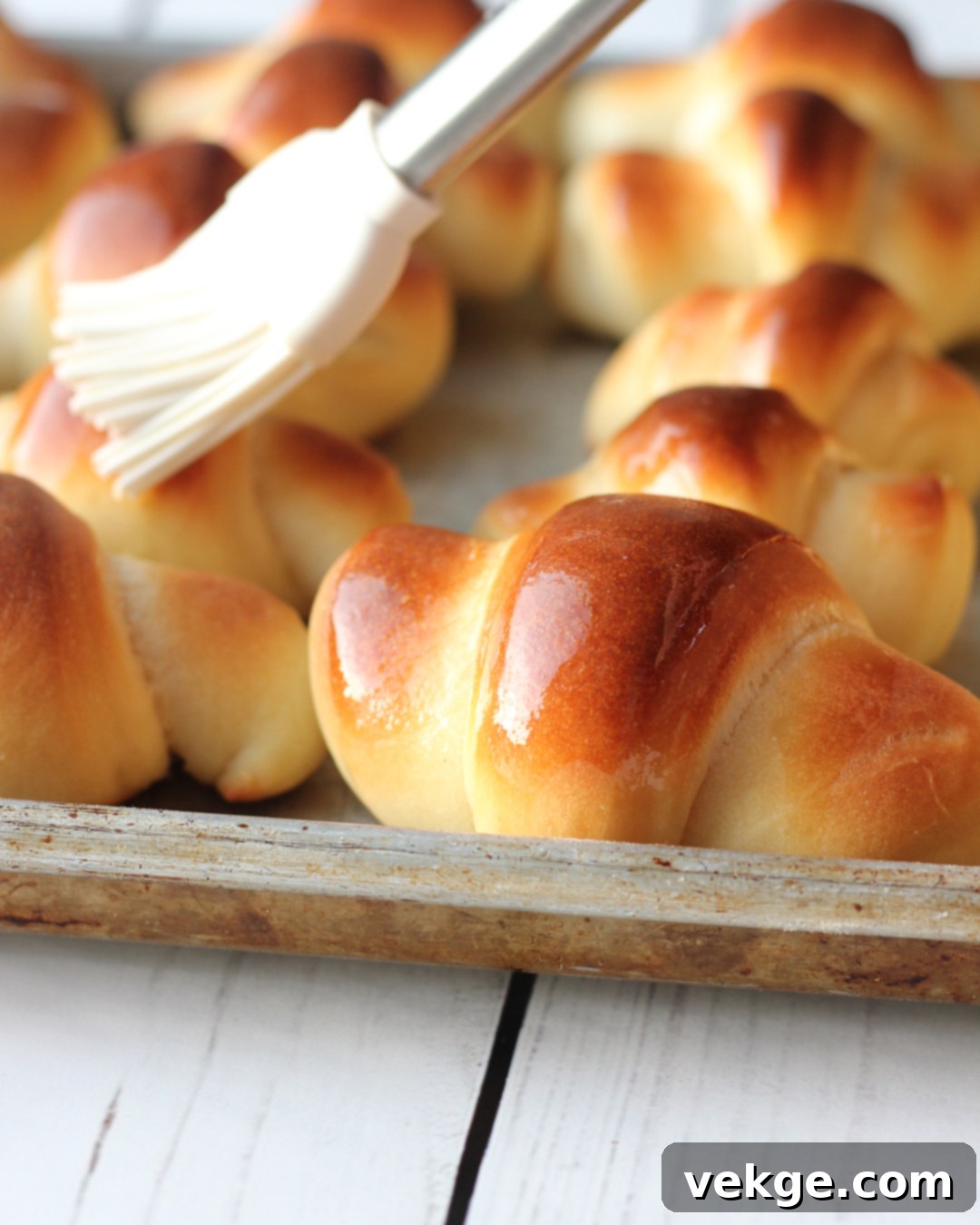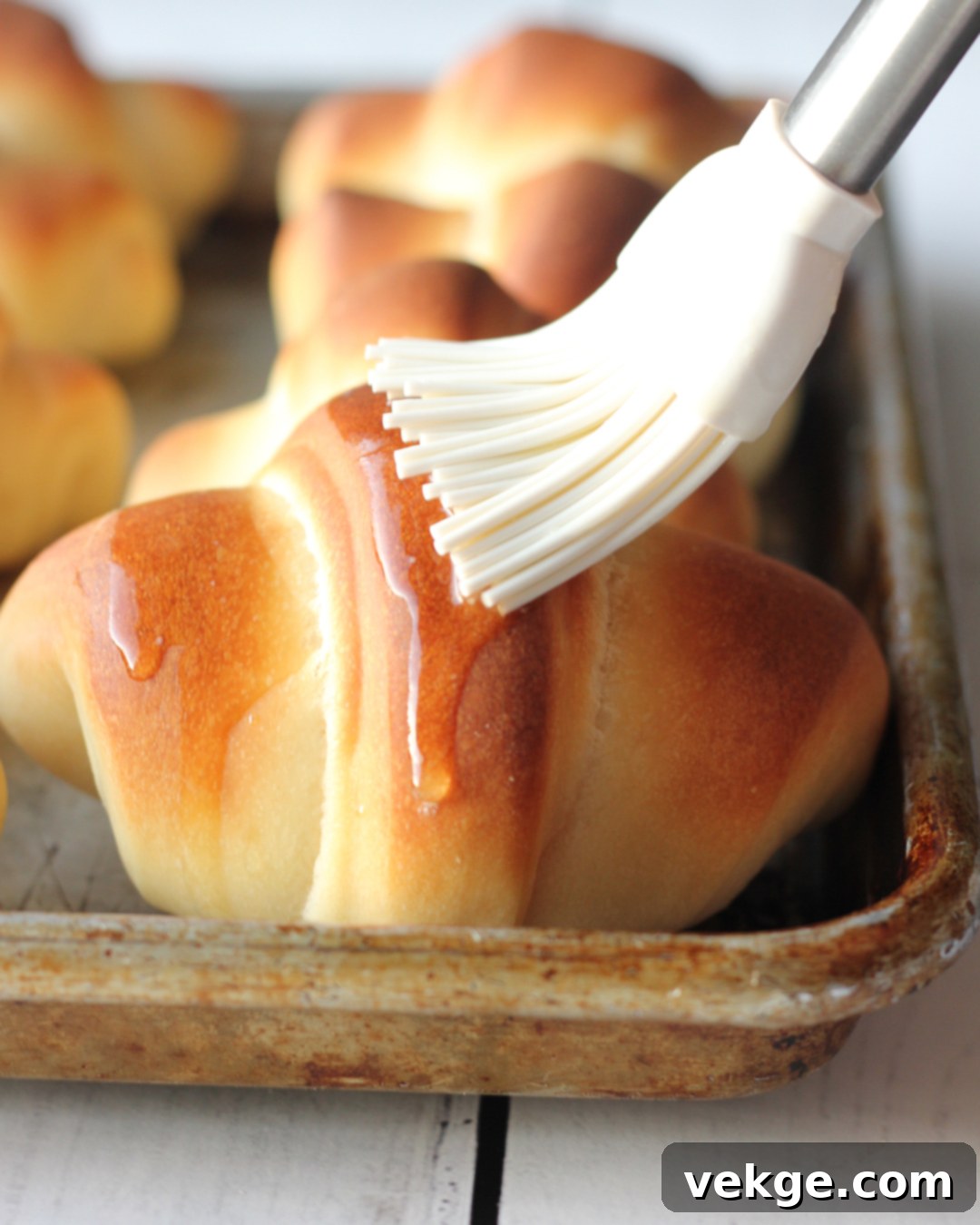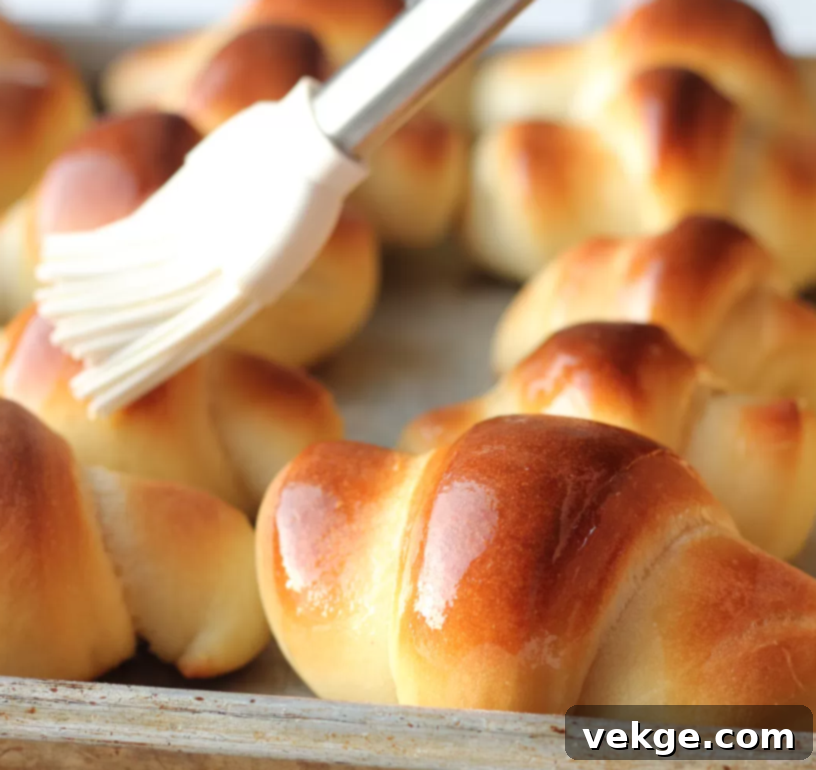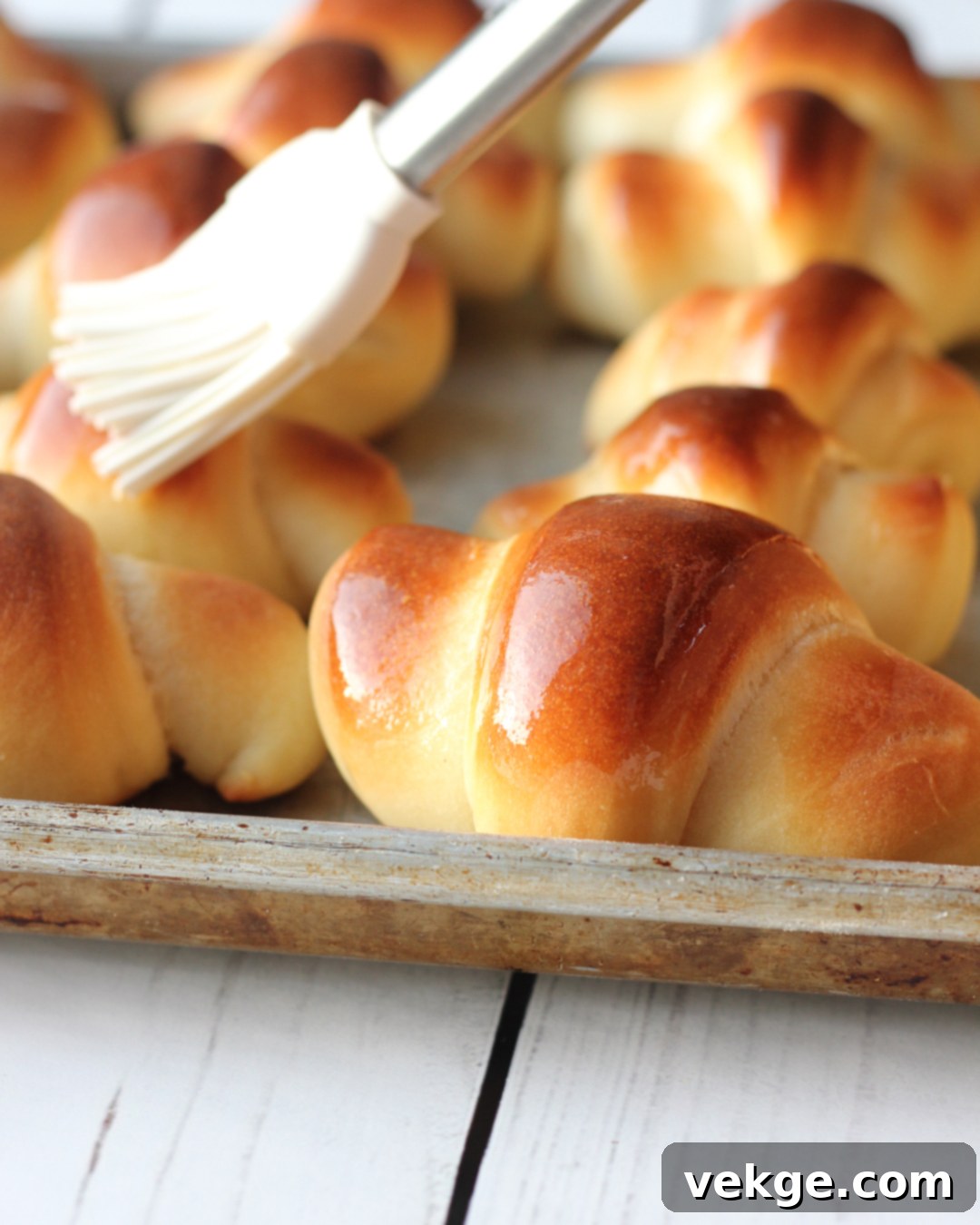There’s an undeniable magic that fills your home when homemade bread is baking. The aroma alone is enough to transport you to a place of comfort and warmth, promising a delightful culinary experience. For me, that magic has been perfectly encapsulated in the incredible Food Nanny dinner rolls. A fervent admirer of her culinary philosophy and timeless recipes, I invested in her cookbooks, and since trying these rolls, I’ve been utterly captivated. They are, without exaggeration, a “wowza” moment! With The Food Nanny’s gracious permission, I’m thrilled to share this exceptional recipe, designed to bring the same joy and deliciousness to your kitchen.
Baking bread, particularly classic dinner rolls, might seem daunting to some, but this recipe is a testament to how simple and rewarding it can be. It consistently delivers rolls that are not just soft and fluffy, but possess a rich flavor and a tender crumb that practically melts in your mouth. Whether you’re an experienced baker or just starting your journey into the world of yeast, these rolls are sure to become a cherished staple in your home. Get ready to impress your family and friends with a basket of golden-brown perfection.

Why Homemade Dinner Rolls Are a Must-Have
In a world of convenience, there’s something profoundly satisfying about preparing food from scratch, especially bread. Homemade dinner rolls offer an unparalleled freshness and flavor that store-bought versions simply cannot match. They elevate any meal, transforming a simple dinner into a memorable feast. Imagine tearing into a warm, buttery roll, its soft interior steaming gently, ready to soak up gravies, sauces, or just a dollop of butter and jam. Beyond the exquisite taste, the process of making these rolls is a therapeutic experience, a wonderful way to connect with traditional cooking methods and create something truly special for your loved ones.
These particular rolls, inspired by The Food Nanny, embody everything you could wish for in a classic dinner roll. They strike the perfect balance between richness and lightness, ensuring they are substantial enough to be satisfying, yet delicate enough to complement any main course without overpowering it. They’re ideal for holiday gatherings, Sunday dinners, or simply as a comforting side on a chilly evening. Their versatility means they pair beautifully with everything from hearty stews and roasts to lighter salads and soups. Once you taste these, there’s no going back to anything else.




Mastering the Art of Fluffy Dinner Rolls: Essential Tips for Success
While the recipe itself is straightforward, understanding a few key principles can guarantee perfect results every time. Yeast is a living organism, and treating it right is crucial. Ensure your water is warm, but not hot – around 105-115°F (40-46°C) is ideal. Water that is too cold won’t activate the yeast, and water that is too hot will kill it. Look for a foamy, bubbly mixture after 5-10 minutes, indicating your yeast is active and ready to work its magic.
Another common pitfall in bread making is adding too much flour. This can lead to dense, dry rolls. This recipe calls for 5 1/2 cups of flour, divided, and it’s essential to gauge your dough’s consistency as you add it. You’re aiming for a soft, stretchy, slightly tacky dough that pulls away from the sides of the bowl. Resist the urge to keep adding flour just because the dough is sticky; a little stickiness is good. If you’re kneading by hand, a lightly floured surface is helpful, but don’t overdo it. The goal is to work the gluten, creating that wonderful elasticity that gives rolls their signature chew.
The Importance of Rising Times
Patience is a virtue in baking, especially when it comes to yeast doughs. The first rise, or bulk fermentation, allows the yeast to produce gases, which give the dough its volume and flavor. A warm, draft-free environment is perfect for this. Covering the dough with plastic wrap prevents it from drying out and forming a crust. Similarly, the second rise after shaping is just as vital. This final proof ensures the rolls are light and airy. Don’t rush these steps; they are critical for achieving the desired texture and taste.
Finally, the baking process itself. Starting the rolls on the bottom rack can help develop a nicely browned base, while moving them to the center rack allows for even cooking and a beautiful golden top. Keep a close eye on them during the final minutes to prevent over-browning. And that finishing touch of melted butter? It’s non-negotiable! It adds a luxurious sheen, enhances the flavor, and keeps the crust soft and pliable.

Delicious Dinner Rolls
Print
Pin
Rate
Ingredients
- 2 Tablespoons active dry yeast
- 1/4 cup plus 1 Tablespoon warm water (approximately 105-115°F / 40-46°C)
- 1 cup milk, warmed
- 3 large eggs
- 1/2 cup granulated sugar
- 1/2 cup vegetable oil (or other neutral oil)
- 5 1/2 cups all-purpose flour, divided
- 2 teaspoons salt
- melted butter for topping (approximately 1/4 cup)
Instructions
- In a small bowl, or the bowl of your stand mixer (like a Bosch), gently combine the active dry yeast with the warm water. Stir briefly to dissolve. Cover the bowl and let this mixture sit undisturbed for about 10 minutes. This allows the yeast to activate; you should see a foamy layer form on top, indicating it’s alive and ready to work.
- While the yeast is activating, heat the milk in a microwave-safe container until it is just warm to the touch, but not scalding hot. You want it to be pleasant to dip your finger into, around 100°F (38°C). Overheating will kill the yeast.
- In a large mixing bowl (or the bowl of your stand mixer), whisk together the eggs, sugar, and oil until well combined and slightly lightened. Gradually stir in the warmed milk and the activated yeast mixture. Add the salt, then begin incorporating the flour, one cup at a time. Mix or knead thoroughly after each addition. Start with 4 1/2 cups of flour and assess the dough’s consistency. Your goal is a soft, elastic, and slightly tacky dough that pulls away from the sides of the bowl. Be cautious not to add more flour than necessary, as this can result in dry, dense rolls. Once the desired consistency is achieved, knead the dough for approximately 5 minutes by hand, or less if using a powerful stand mixer (typically 2-3 minutes). The dough should pass the “windowpane test,” meaning a small piece can be stretched thin enough to see light through it without tearing.
- Cover the dough tightly with plastic wrap or place the lid on your stand mixer bowl. Find a warm, draft-free spot in your kitchen and allow the dough to rise until it has doubled in size, which typically takes between 2 to 3 hours, depending on the warmth of your environment. This slow rise is crucial for developing flavor.
- Lightly grease a 12×18 inch cookie sheet or baking pan. You can use butter, cooking spray, or a light coating of oil. Set it aside for later.
- Once the dough has doubled, gently punch it down to release the air. Turn the dough out onto a lightly floured work surface. Avoid adding excessive flour at this stage.
- Divide the dough into three equal portions. Take one portion and, using a rolling pin, roll it into a large circle, about 1/4 to 1/2 inch thick. With a pizza cutter or a sharp knife, cut the circle into eight equal triangles, much like you would slice a pizza. Starting from the wide end of each triangle, tightly roll it up towards the point. Place these crescent-shaped rolls point-side down on your prepared baking sheet, leaving a little space between each roll for expansion. Repeat with the remaining two portions of dough.
- Cover the shaped rolls with a clean dishcloth and let them rise again in a warm place until they have nearly doubled in size, which should take approximately 15-20 minutes. This second, shorter rise is crucial for light and airy rolls.
- While the rolls are on their second rise, preheat your oven to 400°F (200°C). Once preheated, bake the rolls on the bottom rack for 5 minutes to ensure a golden bottom. Then, carefully move the baking sheet to the center rack and continue baking for another 4-6 minutes, or until the tops are beautifully golden brown. The total baking time will be around 9-11 minutes. Remove the rolls from the oven immediately and, while still hot, generously brush them with melted butter. Serve warm and enjoy!
Serving Suggestions & Customization
These versatile dinner rolls are perfect alongside almost any meal. They are a fantastic addition to holiday feasts like Thanksgiving or Christmas, but equally at home with a simple weeknight chili or a bowl of hearty soup. Serve them warm, with extra butter, honey, or your favorite jam. Leftovers, if you’re lucky enough to have any, make fantastic mini sandwiches or can be reheated gently for breakfast.
Feeling creative? You can easily customize these rolls. Before the second rise, brush them with an egg wash and sprinkle with flaky sea salt, everything bagel seasoning, or dried herbs like rosemary or thyme for an added layer of flavor and texture. For a garlic bread experience, mix minced garlic and fresh parsley into your melted butter for brushing after baking. You could also incorporate a touch of shredded cheddar cheese into the dough during the last stages of kneading for cheesy rolls. The possibilities are endless, making this base recipe a perfect canvas for your culinary imagination.
The Enduring Appeal of Homemade Bread
There’s a reason why homemade bread holds such a special place in our hearts and kitchens. It’s more than just food; it’s a sensory experience, a comforting ritual, and a profound act of love. From the tactile pleasure of kneading the soft dough to the intoxicating aroma that wafts through your home as it bakes, and finally, the pure bliss of savoring a warm, freshly baked roll, every step is rewarding. These Food Nanny-inspired dinner rolls are a perfect entry point into this cherished tradition, offering a foolproof path to achieving bakery-quality results in your own kitchen.
So, gather your ingredients, set aside some time, and embark on this delightful baking adventure. You’ll be amazed at how simple it is to create such deeply satisfying bread. And trust me, the smiles around your dinner table when these delicious, fluffy rolls make their appearance will be all the reward you need. Happy baking!
